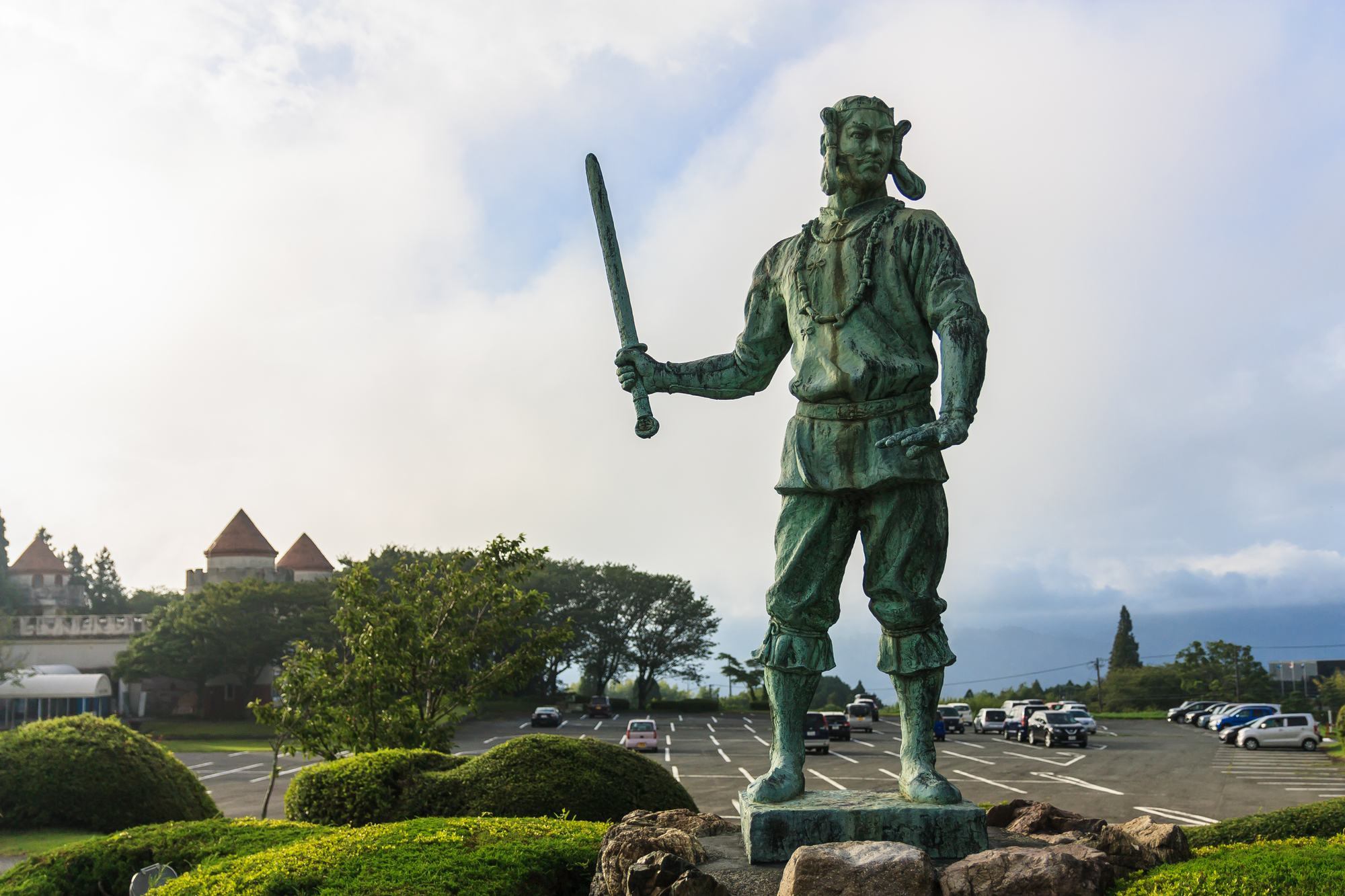Yamato Takeru: The Hero who Pacified the East with the Sword Kusanagi
Exploring the Kojiki
Updated on Aug 23 2019
Japan’s oldest book, the Kojiki. It dramatically illustrates the history of Japan from the beginning of the world, the appearance of the deities, to the Imperial succession. Behind each impressive episode, there exist numerous “mysteries” that are yet to be solved even today. By exploring each, we will think about the origin of Japanese beliefs and culture.

Yamato Takeru statue holding a sword Kusanagi in hand (Nihondaira, Shizuoka City)
Yamato Takeru is a hero who appears in the middle volume of the Kojiki. He was the son of the 12th emperor Keiko, but because he was so strong, he accidentally killed his brother. This brought the animosity of his father upon him.
His father, the emperor, ordered him to subjugate Kumaso Takeru in the west, who refused to obey the imperial court. Yamato Takeru, dressing as a woman with the clothing he received from his aunt Yamato Hime in Ise, drew close to his enemy and successfully defeated him.
The Tragic Fate Awaiting the Hero
Just after returning to the capitol in Yamato, the emperor again ordered him to defeat the enemies to the east. Yamato Takeru bemoaned this new task, but Yamato Hime sent him the sword Kusanagi. This sword was found by the god Susano-o in tail of the beast Yamata-no-orochi, which Susano-o defeated. Susano-o had offered the sword up to the goddess Amaterasu, and the sword was then given to her descendant Ninigi when he was sent down to Earth. It then became one of the Three Sacred Treasures.
Yamato Takeru overcame numerous difficulties with Kusanagi in hand. In the end, he set out to defeat a god on Mt. Ibuki in the province of Owari. This time, however, he left Kusanagi behind. He seems to have felt that this time his bare hands would be enough. Unfortunately, the god, in the shape of a while boar, was too strong for him. He was defeated, and near death. He somehow made his way back to his homeland, but when he arrived at Nobono (modern Kameyama in Mie Prefecture), his strength had left him, and he died.
Even though he was kept at a distance by his father, Yamato Takeru still obeyed his orders to continue fighting, dying while thinking about his homeland. He was indeed a tragic hero.
Weapon-wielding Gods and Heroes Around the World
One possible reason he was killed was that he left Kusanagi behind. This may show how important this sword was to Yamato Takeru.
There are many gods and heroes with weapons that are just as famous. In Indian myth, Indra expels monsters using a vajra. In Greek myth, Zeus has his thunderbolts. In Norse myth, Odin has the spear Gungnir. The heroic King Arthur in England had the holy sword Excalibur. He drew Excalibur from a stone (or anvil), demonstrated his fitness as king, and following his death had the sword flung into a lake.
Having a fantastic weapon means that the wielder has the power to use it and is worthy of possessing it. Perhaps for this reason the loss of their weapon may mean the end of the hero.
-Kokugakuin University has been selected “as a place for the promotion of the study of the Kojiki” by the private university branding project of the Ministry of Education in 2016.-

published in The Japan News on 17/7/2019
Kikuko HIRAFUJI
Research
Mythology, Religious Study, History of Religion
Papers
Deities in the interwar period(2023/09/08)
Translation Issues in Kojiki: God, Deity, or Spirit?(2016/01/01)

